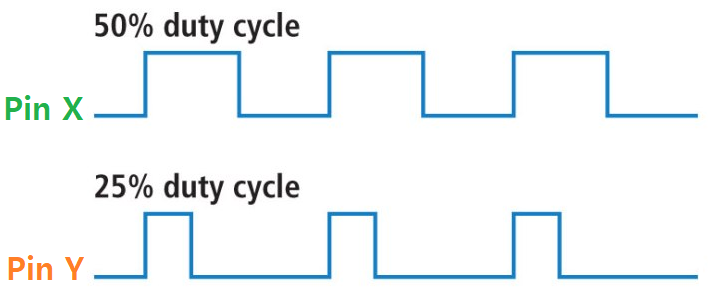Hi, I have an EXP-MSP430G2 launchpad (operating voltage 3.3V) and an Arduino Uno board (operating voltage 5V).
I'm just testing PWM examples with the boards.
Each board uses two pins which creates PWM like the above picture. The frequency of the PWM signals, generated from the boards, will range to 5 ~ 1,000 Hz.
I want to change the amplitude of the 2 PWM signals to a higher level, a range 10~40V.
But instead of using something like a motor driver/Op Amp, which has a fixed amplitude/feedback resistor(manually changing the potentiometer with the hand is not I want), I want to control the amplified voltage using either my launchpad or the Arduino.
Are there any power ICs from TI that can adjust the amplitude of the output signals? It would be appreciated if the IC can be installed on a 2.54mm pitch breadboard.
I don't want to use a potentiometer to control the output of a boost converter. Rather, I want to use serial communications (SPI, UART, etc) to adjust the output of the PWM signals, please.
Thanks for your help.



